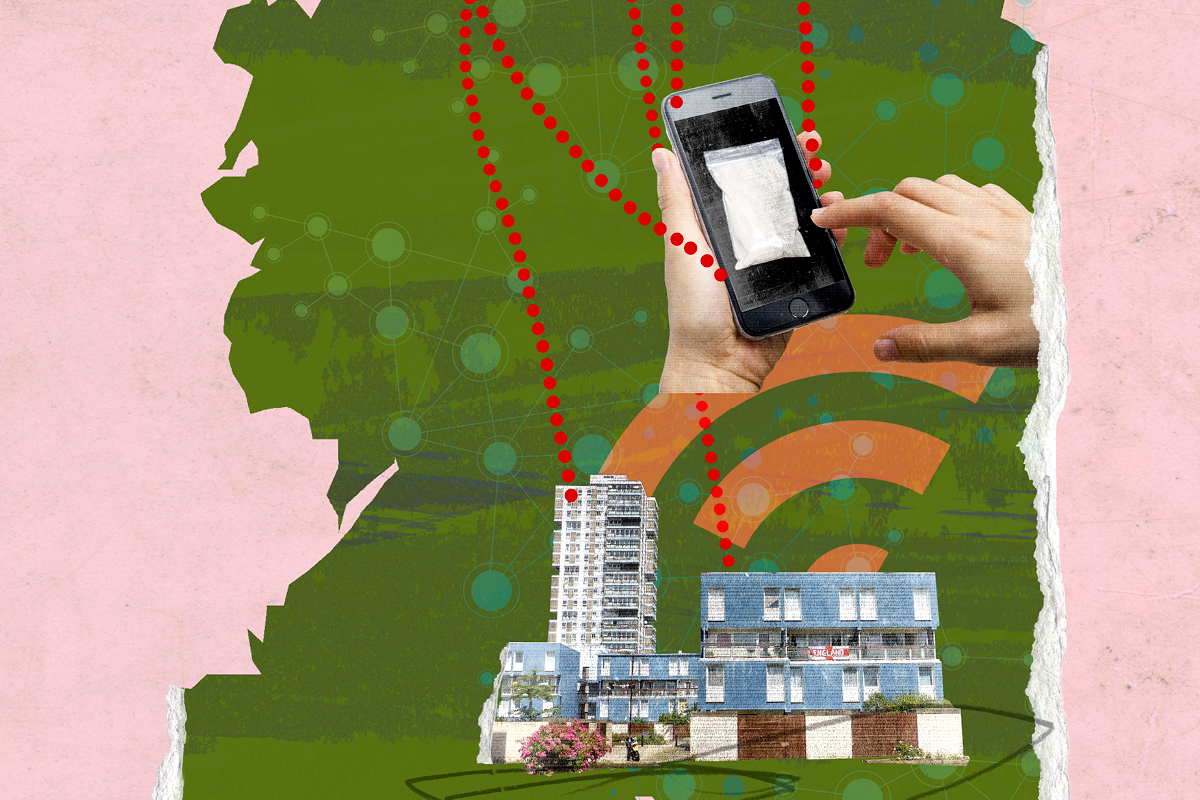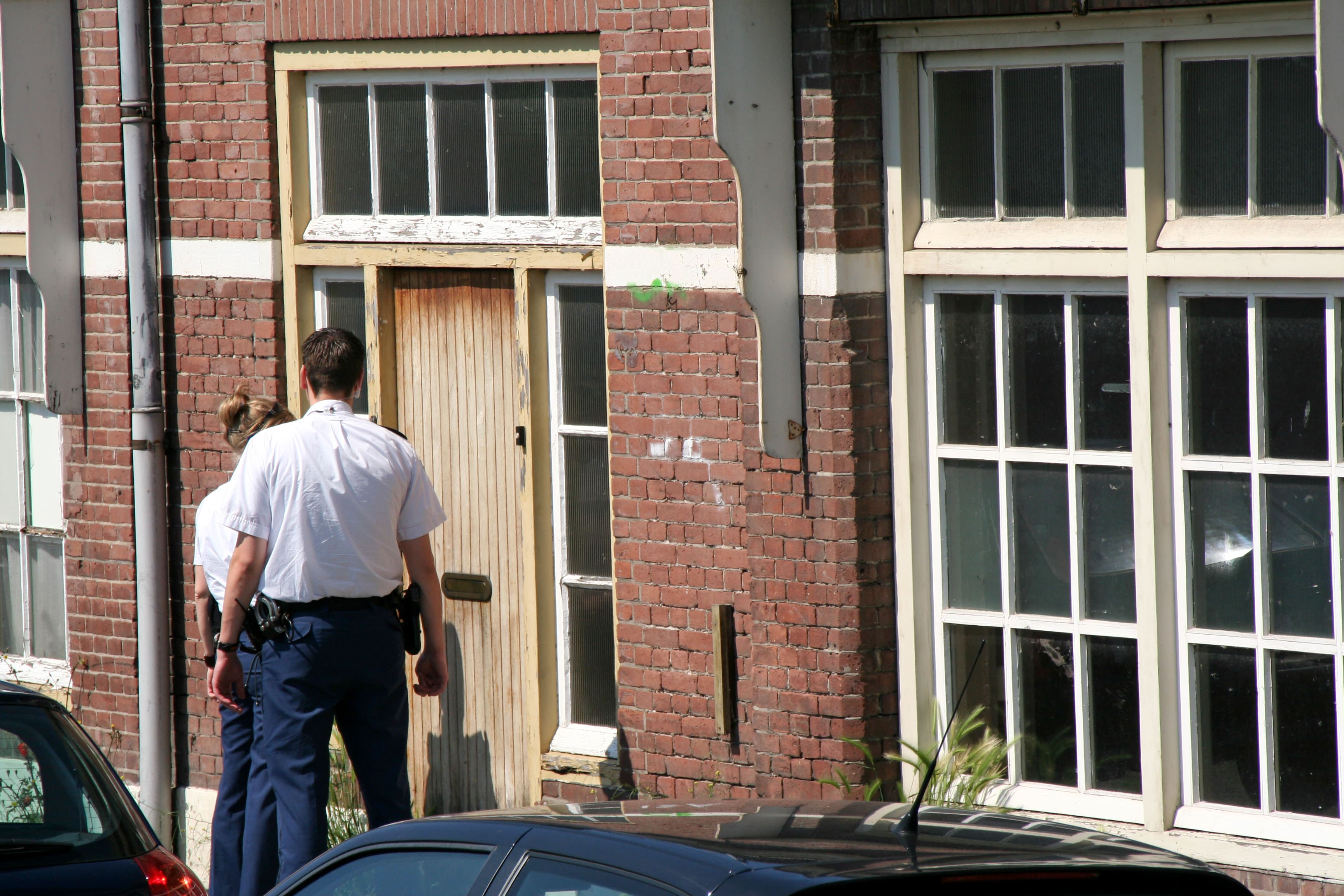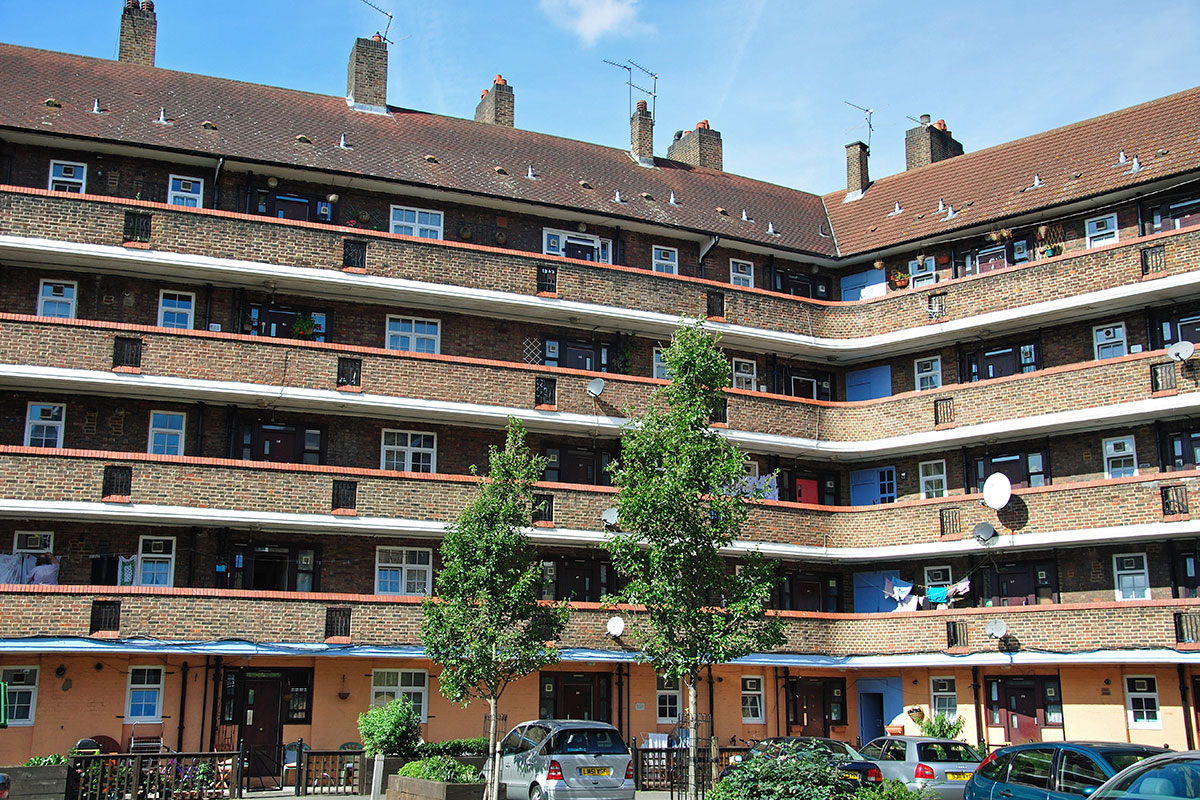You are viewing 1 of your 1 free articles
Altered estates: how social landlords are using data to battle rising violence
An epidemic of violence in London’s inner cities has hit communities hard. Steve Sampson hears how one landlord is using data to try and tackle the problem head-on. Illustration by Eleanor Shakespeare
“Mark was outside the Tennessee chicken shop when he was stabbed,” says youth worker Earl McNeish, as he gives Inside Housing a tour around Hyde Group’s Kennington Park Estate in Lambeth.
“He wasn’t part of a gang, he wasn’t a drug dealer – a group of lads asked him where he was from, and he replied ‘Harlem’ (a moniker bequeathed to the estate by a local gang) and they stabbed him there and then.”
Mark survived the unprovoked attack and now attends the Ambition youth project, headed by Mr McNeish of youth service provider Active Communities Network and funded by Hyde.
That a London housing association should be funding such a project in the face of a spike in youth-related violence comes as no surprise.
But Ambition is no ordinary youth project. It is part of a new Hyde initiative, known as ‘Estate of Mine’. This is a data-driven, mini public health approach that seeks to rewrite the narrative around youth violence.
The project formalises a ‘smart funding’ approach that targets those most in need with specialised help, and Hyde believes it has the potential to be rolled out in hotspots across the capital.
Mapping data from the mayor of London’s office, health providers, local authorities and the Metropolitan Police, Hyde has identified where areas of greatest need overlap with its biggest estates.
Hyde believes this is the first time data maps from so many sources have been layered in this way to reveal how social landlords can help try and tackle the youth crime epidemic.
That evidence is leveraged to micro-target funding, garner the support of community stakeholders, shape services and provide a benchmark against which the impact of projects can be measured.
So how might Estate of Mine work?
Standing at a whiteboard in Hyde’s London Bridge head office, Sarah Willis, its ‘successful places’ programme manager, sketches out the 50,000-home association’s ambitions for Estate of Mine to grow communities.
“What we have been exploring is how we can target resources, and work with other stakeholders and most importantly young people and the community, to gain maximum impact on our estates,” she explains.
“Under Estate of Mine, the aim is to create long-term projects that are inter-connected to create a strong structure in communities made up of stakeholders – funders, the police, businesses, health bodies and local authority services – which can support young people and the wider community.”
The philosophy behind the project is simple: the stronger the sense of community is on an estate, the more connected and resilient people become, and new, positive social norms evolve.
“Everything we do is driven by seeing communities as assets, involving them in the solution, and is based on data and evidence of what works,” Ms Willis elaborates.
Hyde has about a dozen live projects, all of which now sit under the Estate of Mine umbrella, addressing issues such as school exclusions and the isolation among older residents who may no longer feel safe on the streets, as well as wider health issues such as obesity.
But the Ambition youth project to tackle the impact of serious violence is the standard bearer.
“Ambition is a direct response to negative influences, a rise in serious violence and an increase in the drugs trade,” says Ms Willis.
“It’s a hyper-local, intensive programme, designed to offer young people alternatives, with support in attaining long-term goals, be that training, employment or academia.”
Focusing initially on Kennington Park, where Hyde had 1,600 residents, the association is seeking to replicate successes in Scotland, where since 2005 a public health model that treats youth violence as a disease has been turning the tide on knife crime.
According to Police Scotland, there were just over 10,000 recorded incidents of handling an offensive weapon in 2006/07. This fell to about 3,000 in 2015/16 – a decline of 69% in a decade.
To date, replicating this success south of the border has not been easy, with many blaming the UK government’s austerity agenda.
It is this agenda that the All-Party Parliamentary Group on Knife Crime said in May was responsible for exacerbating the problem, with the local authorities that suffer the greatest budget cuts facing the biggest spikes in serious youth violence.
But, outside Whitehall, work has been under way to explore how the approach applied with such success in smaller cities such as Glasgow, which is home to less than 600,000 people, could be implemented among London’s complex communities of more than eight million.
In 2017, the cross-party Youth Violence Commission was launched to examine the root causes of the problem in England, Scotland and Wales, and to make policy recommendations to address them.
Twelve months on, City Hall established a Violence Reduction Unit to tackle violence in the capital. Local authorities across London have followed suit, with Lambeth taking the lead.
And on the ground, service providers, social landlords and funders have been coming together to share data, knowledge and ambitions through organisations such as London Funders and the Housing Associations’ Youth Network (HAYN).
HAYN brings together big social landlords such as Hyde, Clarion and One Housing Group, alongside smaller players such as Phoenix Community Housing and Poplar Harca, to develop frameworks for members to work within.
In her role as vice-chair, Ms Willis has been leading on a collective impact approach to reducing violence in key London boroughs. It is from this work that she hopes to roll out the approach, together with other social landlords and stakeholders, as a pilot in six to eight boroughs that have been identified as hotspots.
“We are currently mapping data from Greater London Authority dashboards in relation to levels of violence, and mapping that against housing stock and current programmes of work,” Ms Willis explains.
“Historically, housing associations have operated independently. There has been a mantra that local communities needed local solutions, so the approach wasn’t joined up. And that’s something we’re hoping to address.
Kennington Park Estate in Lambeth. Work is focused on community involvement (picture: Alamy)
“By strategically targeting a hotspot of serious violence we hope to take the sting out of it locally and its impact in neighbouring areas. This is a long-term project.”
So what data defines Kennington Park Estate as a hotspot for youth violence? And what does the challenge look like?
Earlier this year, Lambeth Council conceded that the borough had become the “epicentre” for serious youth violence between rival gangs, including those from the neighbouring boroughs of Southwark and Croydon.
In 2017/18, the borough recorded a 35% year-on-year rise in incidents of serious youth violence, defined as “the most serious” violence where the victim was aged under 19. Offences peaked between 4pm and 6pm.
Although Lambeth’s figures are concerning, they mirror a national rise in such incidents. In the four years to 2017/18, the Office for National Statistics found that there had been a 57% increase in knife crime across the UK.
A rise in gang affiliation, an increase in the number of children involved in drug supply, the emergence of county lines operations, a rise in incidents of personal robbery, and a wider willingness among young people to carry a knife were all said to play a role.
“Everything we do is driven by seeing communities as assets, involving them in the solution, and is based on data and evidence of what works”
Sarah Willis, Hyde
As this national trend continued, the Metropolitan Police gang matrix – which monitors gang activity – stated that the capital’s first super-gang, the Harlem Spartans, had gained a foothold in Kennington Park over 2018 with an aggressive drug distribution business that was fuelling violence.
Meanwhile, a collective of teenage drill artists have become YouTube celebrities through their chronicling of tit-for-tat street violence and given the Harlem brand a global reach.
For Mr McNeish, who heads up the Ambition project and is now embedded on the estate five days a week, the pervasive threat of violence to the local area is toxic.
“The culture attached to the gangs that has evolved here makes a clear offer to young people of immediate gratification, but that comes with negative life choices,” he tells Inside Housing.
“Some of the guys who come to us are more than on the peripheries of the drug trade, while others are doing well at school but could be swayed.
“We’re here to make a counteroffer. It’s about early intervention, working with a core of 15 to 30 young people a year to drive social mobility.”
The strapline on Ambition’s publicity flyers reads ‘No Long Thing’, echoing the prevailing attitude among many young people on the estate towards the long-term commitment required to gain success through traditional pathways when there is easy money to be made on the streets.
But as Mr McNeish explains, that tag is something of a misnomer; the long term is very much the focus of the work at hand.
“Essentially, we specialise in youth engagement with sport as a hook,” continues Mr McNeish. “So we’ll formalise sporting events, youth clubs, and trips away from the estate, create safe spaces for young people, when and where they are most needed.
“We’re here to make a counteroffer. It’s about early intervention, working with a core of 15 to 30 young people a year to drive social mobility”
Earl McNeish, Active Communities Network
“But the real work is to identify the ambitions of young people, the barriers they face and help them to overcome them and build the foundations for their futures.”
So what does Ambition hope to achieve?
To date, Estate of Mine has secured funding from partners including Battersea Power Station Foundation, the Mayor’s Young Londoners Fund and Optivo to fund projects for the next three years.
Key outcomes include: to improve levels of aspiration among young people and the confidence to take up opportunities; to get a cohort of young people into aspirational jobs with a group of committed employers; to reduce the impact of negative behaviour on local estates; and to establish a ‘replicable model’ and evidence base for similar projects elsewhere.
For now, it is early days for the Ambition project. Hyde is expecting medium-term impact data in the second year to give an indication of its success. While Hyde and its partners on the Ambition project understand that solving the problem will not be easy or quick, Ms Willis believes that if you view violence through a public health lens it follows that there must be a cure.
“If we look at the root causes of serious violence and its wider impacts through a health lens, then it becomes a solvable issue that can be addressed through working with communities,” she summarises.
“We are confident that by engaging with funders, local authorities and a wide cross sector of stakeholders we can go beyond collaboration to truly address the root causes of violence and work systemically to create sustainable change.”
This is the challenge. There are many others working to similar ends, but the new approach here and its application of data could, it is hoped, play a significant role.













